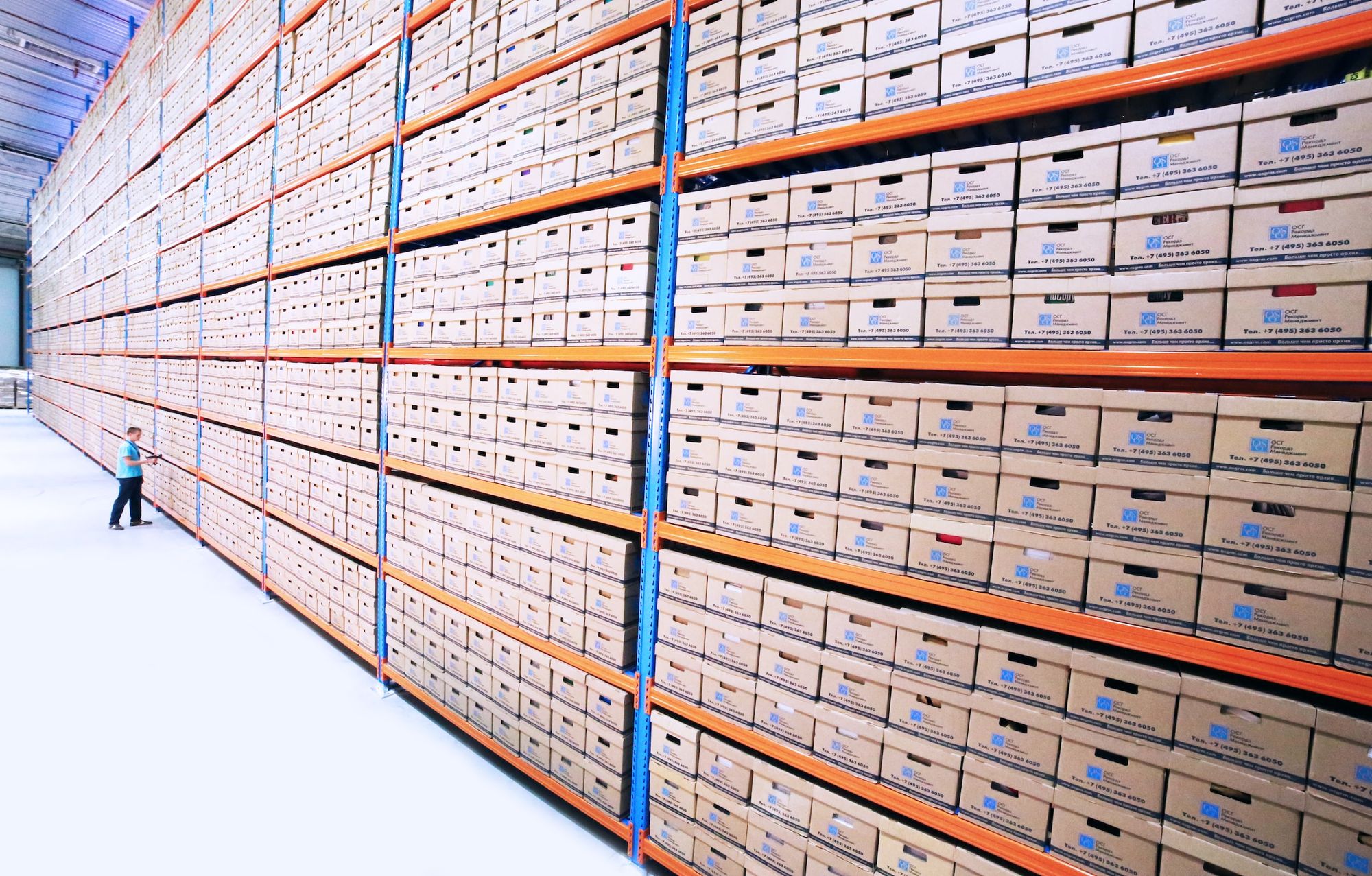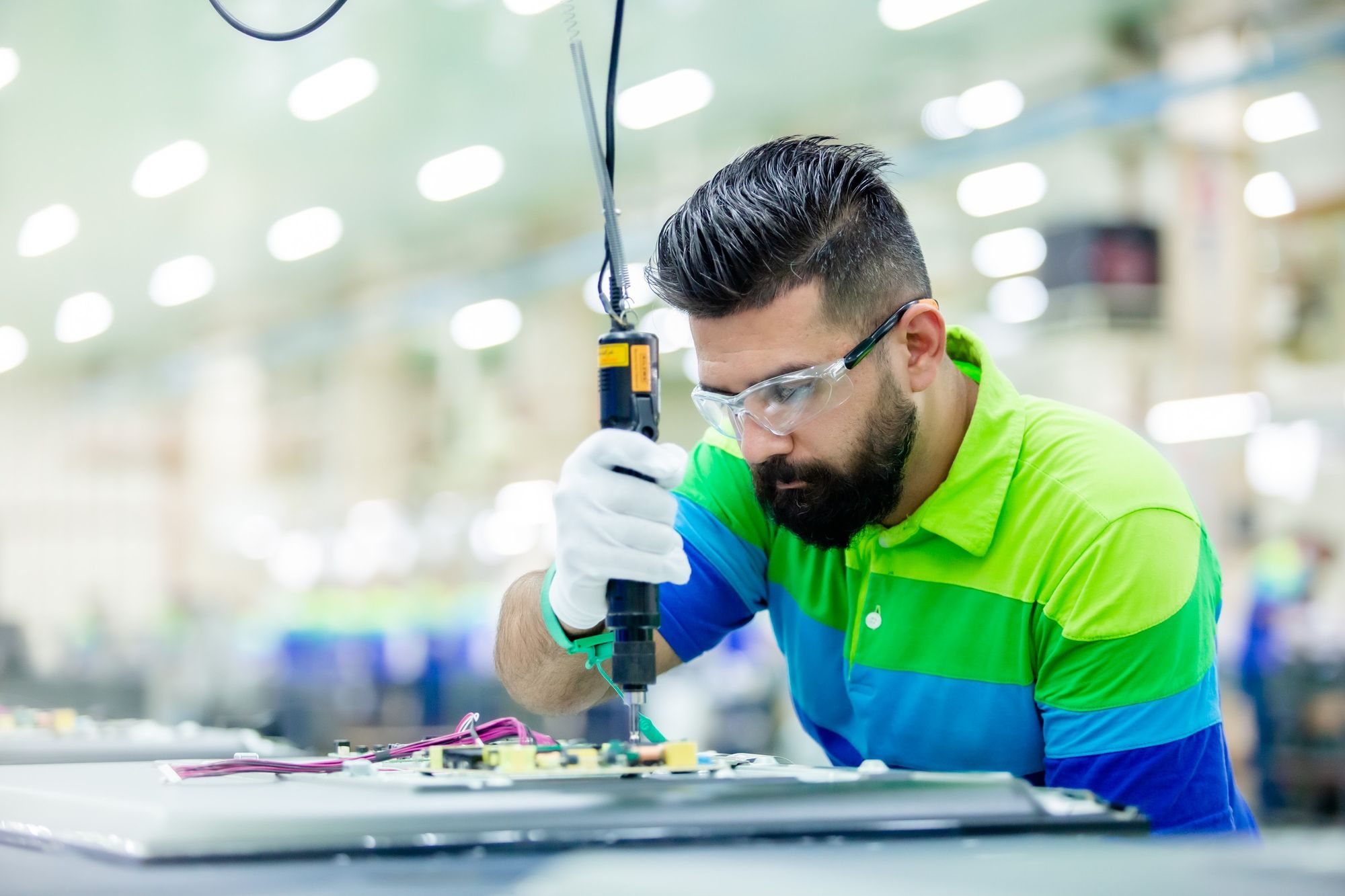Manufacturing companies are starting to understand the benefits that going paperless and switching to digital systems may provide. The improvements that paperless manufacturing can bring to the table span a number of operational areas and have the potential to fundamentally transform operations.

This article covers the following:
- What is paperless manufacturing?
- How does paperless manufacturing work?
- What are the benefits of paperless manufacturing?
- How to streamline paperless production with digital solutions?
- What are the challenges in paperless manufacturing?
- How to improve paperless manufacturing?
- How can Deskera assist you?
What is Paperless Manufacturing?
Paperless manufacturing is a term used to describe the practice of eliminating physical documents and materials in the production process. This includes the use of paperless machines, digital data, and the use of automation to reduce costs and increase production efficiency.
The main advantages of paperless manufacturing include the reduction of waste and the improvement of productivity. Paperless manufacturing eliminates the need for paper documents, which can be expensive, time-consuming, and difficult to manage.
By using digital data instead of paper, companies can store and access information quickly and easily. This eliminates the need for manual input and ensures accuracy, which leads to higher-quality products. Paperless manufacturing also reduces the need for physical labor. By using automation, machines can do the work for you, eliminating the need for manual labor.
This reduces costs, increases efficiency, and reduces the risk of human error. Automation also allows for faster production and ensures that products are produced with higher accuracy. Paperless manufacturing also helps increase safety in the workplace.
By eliminating paper documents, there is less of a chance that an employee will be injured while looking for a particular document. This helps reduce the risk of accidents, saves time, and helps decrease overall costs. Paperless manufacturing also helps reduce environmental impact.
By using digital data instead of paper, companies can reduce their carbon footprint. This helps reduce the amount of energy and resources used to produce products, which in turn helps preserve natural resources and minimize pollution.
Finally, paperless manufacturing can help companies save money. By eliminating paper documents, companies can save money on printing and storage costs. Additionally, digital data is more secure than paper documents, which helps companies reduce their risk of data theft and other security breaches.
Overall, paperless manufacturing is an incredibly beneficial practice that helps companies save money, increase efficiency, and reduce their environmental impact. By eliminating paper documents and using digital data, companies can save money on printing and storage costs, reduce the risk of human error, and increase safety in the workplace.
Additionally, paperless manufacturing helps companies reduce their environmental impact by using fewer resources and minimizing pollution. By taking advantage of paperless manufacturing, companies can save money, improve production efficiency, and reduce their environmental impact.
How Does Paperless Manufacturing Work?
Paperless manufacturing is a method of production that is gaining traction in the manufacturing industry. It is a way of conducting production processes with minimal or no use of paper. Paperless manufacturing is a digital form of production that utilizes the latest technology to increase efficiency and reduce costs.
Paperless manufacturing involves the use of computerized systems to manage and control the flow of materials, labor, and other resources used in the production process. This type of production allows companies to streamline their workflow and improve the accuracy and reliability of their processes.
It also reduces the amount of paper used in production, eliminating the need for manual data entry and thereby reducing time and costs. Paperless manufacturing not only eliminates the need for paper but also eliminates the need for manual labor. Automated systems are used to monitor and control the production process, from raw material input to finished product output.
This reduces the need for manual labor and increases the production efficiency. Paperless manufacturing also helps to reduce the cost of production by reducing the number of materials used. By using automated systems to control the production process, companies are able to save on the cost of raw materials and labor.
This, in turn, increases their profits. Paperless manufacturing also reduces the amount of waste generated during the production process. Automated systems are able to detect and eliminate any errors that could lead to production waste. This reduces the amount of waste generated and, in turn, helps to reduce the cost of production.
Paperless manufacturing also helps to improve the quality of products. Automated systems are able to detect any defects in the production process and alert the necessary personnel to take the necessary steps to correct the problem. This helps to ensure that the final product is of high quality.
Paperless manufacturing is becoming increasingly popular in the manufacturing industry. Companies are taking advantage of this type of production to reduce costs, increase efficiency, and improve product quality. It is also helping to reduce the amount of waste generated during the production process and, in turn, helps to save the environment.
Paperless manufacturing is a great way for manufacturers to improve their production processes and reduce costs. By taking advantage of the latest technology, companies can streamline their workflow and increase the accuracy and reliability of their processes.
This, in turn, helps to reduce the cost of production and improve product quality. Paperless manufacturing is becoming increasingly popular in the manufacturing industry, and companies are taking advantage of it to reduce costs and increase efficiency.
What is the Importance of Paperless Manufacturing?
Paperless manufacturing is becoming increasingly important in the manufacturing industry as it helps reduce costs, increase efficiency, and improve the environment. By eliminating paper-based documentation, manufacturing companies can reduce the amount of paper they use and thereby reduce their costs.
Additionally, paperless manufacturing eliminates manual data entry, which can lead to greater accuracy in data collection and reporting. Furthermore, paperless manufacturing reduces the amount of paper waste that is generated, which helps to reduce the environmental impact of the manufacturing process.
Finally, paperless manufacturing can help to improve the overall productivity of a manufacturing facility as it allows for faster data processing and access to real-time information.
What are the Benefits of Paperless Manufacturing
Paperless manufacturing is a new way of running a production line that is becoming increasingly popular among manufacturers. This method utilizes technology to streamline the entire production process from start to finish.
It reduces the cost associated with paper-based production and allows for greater efficiency, accuracy, and visibility into the entire production process. The first benefit of paperless manufacturing is that it is much more cost effective than traditional production methods.
Paper-based production requires vast amounts of paper, ink, and other related materials, which can be expensive. By eliminating the need for these resources, manufacturers can save money on their production costs.
Additionally, paperless manufacturing also reduces the amount of time needed to complete a production process, as there is no need to manually enter information into a system.
This time-saving benefit is especially useful for businesses that rely on quick turnaround times to meet customer demands. Another benefit of paperless manufacturing is that it offers greater accuracy and visibility into the production process.
Paper-based production can be prone to errors, as it requires manual data entry and double-checking of information. Paperless manufacturing eliminates this risk by providing real-time, automated data collection and tracking.
This data can then be used to generate reports that provide actionable insights into the production process, allowing manufacturers to quickly identify, diagnose, and address issues as they arise.
Paperless manufacturing also offers improved security for sensitive information, as it eliminates the need for physical documents to be stored and handled. This reduces the risk of data breaches and increases the overall security of the production process.
Additionally, paperless manufacturing can also reduce the amount of waste generated by the production process, as it eliminates the need for physical documents to be printed.
This helps to reduce the environmental impact of production processes, making it a much more sustainable way of running a production line. Finally, paperless manufacturing also offers improved collaboration between all team members involved in the production process.
By allowing for the easy sharing of data and documents, team members can collaborate more efficiently and effectively. This improved collaboration can increase the speed and quality of production, allowing manufacturers to increase their production output and create higher-quality products.
Overall, paperless manufacturing has numerous benefits that can drastically improve the efficiency and accuracy of a production process. By eliminating the need for physical documents, reduces costs and waste, increases security, and improves collaboration between team members. For these reasons, paperless manufacturing is quickly becoming the preferred way of running a production line for many manufacturers.
How to Streamline Paperless Manufacturing with Digital Solutions?
The modern age of manufacturing is one that is driven by digital solutions. As technology continues to evolve, streamlining paperless manufacturing with digital solutions is becoming increasingly important for businesses to remain competitive.
Paperless manufacturing has the potential to reduce overhead costs and improve operational efficiency. However, it requires proper planning and implementation in order to be effective. Here are some tips on how to streamline paperless manufacturing with digital solutions.
Automate Processes
Automation is key to streamlining paperless manufacturing with digital solutions. Automation can help reduce manual labor and streamline processes. By automating certain processes, businesses can save time and money while increasing accuracy and efficiency. Automation can also help reduce errors and improve customer satisfaction.
Invest in Quality Control Software
Quality control is essential for any manufacturing process. The quality control software can help streamline paperless manufacturing by ensuring that products meet quality standards. This type of software can help identify defects and improve product quality.
Use Cloud-Based Solutions
Cloud-based solutions are ideal for streamlining paperless manufacturing with digital solutions. Cloud-based solutions can provide businesses with the flexibility to access their data from any device or location. This can help streamline processes and improve efficiency.
Implement Data Analytics
Data analytics can help streamline paperless manufacturing with digital solutions. Data analytics can provide businesses with real-time insights into their processes and products. This can help businesses identify areas for improvement and make necessary changes quickly.
Leverage Big Data
Big data can provide businesses with valuable insights about their manufacturing processes. Leveraging big data can help businesses identify trends, optimize processes, and improve efficiency. This can help streamline paperless manufacturing with digital solutions.
Adopt the Internet of Things (IoT)
The Internet of Things (IoT) can help streamline paperless manufacturing with digital solutions. IoT can help businesses connect machines, products, and people. This can provide businesses with real-time data and insights about their products and processes.
Utilizing Robotics
Robotics can help streamline paperless manufacturing with digital solutions. Robotics can help automate certain processes and reduce manual labor. This can help businesses save time and money while improving accuracy and efficiency.
By streamlining paperless manufacturing with digital solutions, businesses can save time and money while increasing operational efficiency. However, proper planning and implementation are necessary for successful implementation. By following the tips outlined above, businesses can increase their chances of success.
What are the Challenges in Paperless Manufacturing?
The concept of paperless manufacturing has been around for quite some time, but it is only recently that it is becoming more and more mainstream. With the advent of technology, more and more companies are beginning to embrace the idea of paperless manufacturing as a way to reduce costs, increase efficiency, and improve communication between departments.
While the concept of paperless manufacturing has its advantages, it also presents some unique challenges that production managers must be aware of in order to ensure a successful implementation.
One of the biggest challenges in paperless manufacturing is the need to transition from traditional paper-based processes to a fully digital system. This involves a significant investment in hardware, software, and personnel. Additionally, it can be difficult to change the habits and mindsets of personnel who are used to working in a paper-based system.
This can be a long and difficult process, as it requires training and education to ensure that person understands the new system and how it works. Another challenge facing production managers who wish to implement a paperless system is managing the data generated by the system.
With a paper-based system, the data is typically stored in physical documents, which can be easily accessed and organized. However, with a digital system, the data must be stored digitally, and it can be difficult to ensure that the data is secure, organized, and easily accessible.
Additionally, the data must be managed in order to ensure that it is up-to-date and accurate. This requires the use of sophisticated software and systems, which can be costly and time-consuming to implement and maintain.
Finally, production managers must be aware of the potential for errors in a paperless system. As the data is all digital, it can be vulnerable to errors and mistakes.
This can lead to delays and confusion, which can be costly and time-consuming to fix. Additionally, mistakes can lead to incorrect decision-making, which can have serious repercussions for a business.
In order to avoid these issues, production managers must make sure that the systems they use are secure and reliable, and that personnel is properly trained in the use of the system.
Overall, paperless manufacturing presents a number of challenges for production managers. It is important for product managers to be aware of these challenges, and to take steps to ensure a successful implementation.
This includes investing in the necessary hardware, software, and personnel, managing the data generated by the system, and avoiding errors and mistakes that can lead to costly delays and confusion. With the right approach, production managers can successfully implement a paperless manufacturing system and reap the many benefits it can bring to their business.
How to Improve Paperless Manufacturing?
Paperless manufacturing is a process of production that eliminates the use of paper documents in the manufacturing process. This strategy is becoming increasingly popular in industrial settings as it reduces costs associated with paper production, storage, and disposal, as well as reduces the potential for lost or misplaced documents.
Implement Digital Document Management
The first step to transitioning to paperless manufacturing is to implement a digital document management system. This system should have the capability to store, manage, and track all documents used in the manufacturing process. It should also be able to automate the process of document retrieval and retrieval.
Utilize Cloud-Based Document Storage
Cloud-based document storage systems are a great way to store and manage documents in a secure, remote environment. Documents are stored on remote servers and can be accessed from anywhere with an internet connection. This eliminates the need for paper document storage and the associated costs.
Implement Digital Signature Software
Digital signature software is a great way to electronically sign documents without the use of paper. This eliminates the need to print, sign, and scan documents in order to get them signed. This can also help to reduce the risk of lost or misplaced documents.
Use Barcodes and RFID Tags
Barcodes and RFID tags can be used to track the movement of materials and components during the manufacturing process. This eliminates the need to manually track the movement of materials and components and also reduces the potential for errors and lost documents.
Utilize e-Forms
E-forms are electronic forms that can be used to capture data and information in the manufacturing process. This eliminates the need for paper forms, which are often difficult to store and manage.
Use Mobile Devices
Mobile devices can be used to access documents, enter data, and track the movement of materials and components during the manufacturing process. This eliminates the need to print documents or manually enter data.
Implement Automated Processes
Automated processes can be used to streamline the manufacturing process and reduce the need for manual intervention. This eliminates the need for paper documents and reduces the potential for errors and lost documents.
Utilize Digital Tracking Systems
Digital tracking systems can be used to monitor the progress of the manufacturing process and track the movement of materials and components. This eliminates the need for manual tracking and reduces the potential for errors and lost documents.
Implement Automated Document Scanning
Automated document scanning can be used to quickly and accurately scan and store paper documents. This eliminates the need to scan documents manually and reduces the potential for errors and lost documents.
Adopt a “Paperless Culture”
While implementing the above strategies is important, it is also important to adopt a “paperless culture.” This means encouraging the use of paperless processes and discouraging the use of paper documents. This can help to ensure that the transition to paperless manufacturing is successful.
By following these steps, organizations can successfully transition to paperless manufacturing and reap the benefits of reduced costs, improved efficiency, and increased accuracy. Additionally, transitioning to paperless manufacturing can help to reduce the environmental impact of paper production, storage, and disposal.
How Can Deskera Assist You?
Remember discussing best-in-class inventory software? There is no way you can find anything as well-equipped as the Deskera inventory software. Deskera inventory software allows you to closely monitor the manufacturing process.

Key Takeaways:
- Paperless manufacturing is a term used to describe the practice of eliminating physical documents and materials in the production process.
- Paperless manufacturing involves the use of computerized systems to manage and control the flow of materials, labor, and other resources used in the production process.
- With a paper-based system, the data is typically stored in physical documents, which can be easily accessed and organized.
- One of the biggest challenges in paperless manufacturing is the need to transition from traditional paper-based processes to a fully digital system.
- paperless manufacturing has numerous benefits that can drastically improve the efficiency and accuracy of a production process.
Related Articles:











